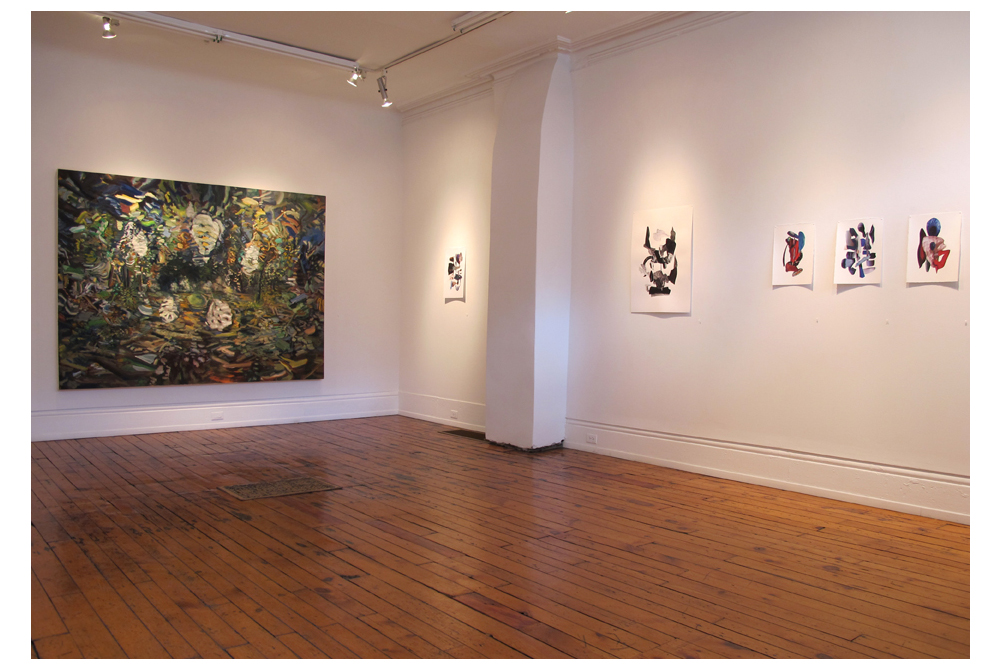Gary Evans has been painting up a storm since the late 1980s. A longtime denizen of Paul Petro Contemporary Art, Evans has presented himself in show after show as an inventive colourist possessed by an equally inventive take on landscape painting. That take often results in scenes of confounding density, which, with observer patience, settle into rich, combinative sequences of descriptive paint that pay homage to landscape in terms of not just spatial experience, but also in terms of accrued personal memory and passing real time.
Twisting noodles of brushed paint firm up a scenic space around this perceptual volatility. The brushstrokes duck and weave between those experiential planes as manifestations of pure viscous paint, gesture, local colour and shifting points of perspective. If Harold Klunder and Ben Reeves have competition in the realm of impacted pictorial surface, it is Evans.
His new show at Paul Petro delivers a trio of oil paintings from 2014—At the mouth of the woods, Sound Hole and Daydream—that show Evans at his intensive best. At the mouth of the woods brings a sense of spinning peripheral vision to a forest scene that deepens and deepens as you look. Skeins of paint, delicately brushed in terms of blended pigments, leave gaps that open onto colour spaces beyond. The bottom layer has a pushback warmth that reads like reachable sunlight. It is hard not to think of the whole enterprise—from image to title—as a working metaphor for Evan’s complicated procedural painting practice. Every painting entails a sense of arrival, of moving through paint towards something beyond it.
What a surprise, then, to see the paintings surrounded by numerous new collage works made this year. The suggestive depths of the paintings disappear in favour of graphic flatness as Evans cuts out colour samples, clothing items and clothed body fragments from fashion magazines and pastes them into new clusters that engage in a playful dialogue with the surrounded and surrounding white space. Each has its own suggestive title that opens up the interpretive field of the collage. They are not unrelated to Geoffrey Farmer’s sculptural transmutations of picture content, where image space is delivered as if it bears implicit volume and real-world materiality. The more one looks, the more one thinks that Evans is chasing the brushstrokes he left behind and the directional energy they lent to reading the surfaces of the paintings. Each collage becomes a compound of textural and directional energies of the clipped fashion photos. The title of the show, “Ghost Host,” aims at those gathered reverberations. It tells us that Evans has found new fields to harvest.









